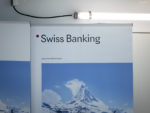Home › 2) CHF › The History of the Swiss Franc › Swiss Franc History: From Bretton Woods until the Swiss real estate crisis
Swiss Franc History: From Bretton Woods until the Swiss real estate crisis
The real effective exchange rate (REER) of the franc followed
an ascending path, in particular since the end of the Bretton Woods system.The graph indicates certain periods when the franc was over- and periods when it was undervalued against the REER. During the overvalued phases, the franc often “overshot” (see economic explanation by Dornbusch 1976).
- End of Bretton Woods and Nixon shock: The twin-deficits (public deficit and trade deficit) of the United States caused by the Vietnam War triggered a quick appreciation of the franc; USD/CHF fell from 4.35 to 2.35 in just three years. Due to huge capital inflows, credit growth and inflation in Switzerland, the SNB stopped the initial interventions of 1972 and smoothly switched to monetary targets. The strong CHF appreciation helped to reduce the monetary base again.
- First cap on the franc in 1978: After the recession of 1975, the United States and most industrialized economies implemented a very expansive monetary policy; whereas, Switzerland and Germany maintained money supply targets. This caused high U.S. inflation of up to 14%, while prices remained limited in Switzerland (see graph on the previous page). When the REER overshot from 90 to 110, the SNB intervened and established a minimum rate of DEM/CHF at 0.80. The SNB had to buy dollars for 6.6% of Swiss GDP, an increase of the monetary base of 17%. During these years many foreign workers left Switzerland that led to a lower GDP and facilitated a weaker franc. High inflation after the second oil shock let SNB chairman Fritz Leutwiler question the policy and the franc cap again
- CHF undervaluation between 1981 and 1986: Fed chairman Paul Volcker adopted money supply targets and high interest rates. With higher unemployment unions lost their power. High rates, the oil glut and low commodity prices kept U.S. inflation in check.
- The Plaza accord in 1985 caused the overvalued dollar to fall again. Swiss inflation came down and the franc rose again. Cheaper interest rates helped to increase Swiss real estate prices.
- CHF overshooting in 1988 caused by the stock market crash in October 1987. The SNB allowed money supply to rise higher than their targets and initiated a Swiss real estate boom.
- Directly afterwards an undervalued period started because the global economy, and also the dollar, had quickly recovered.
- Overshooting in 1995: In expectation of a VAT increase the SNB did not cut rates quickly enough, for even if the inflation came down again. This resulted in very positive real interest rates, an overvalued franc and a further falling real estate market. The central bank was strongly criticized for its policy.
|
UBS Real Effective Exchange Rate Franc UBS'sExport-weighted exchange rate CHF - Click to enlarge |
<– Back to History Overview
George Dorgan (penname) predicted the end of the EUR/CHF peg at the CFA Society and at many occasions on SeekingAlpha.com and on this blog. Several Swiss and international financial advisors support the site. These firms aim to deliver independent advice from the often misleading mainstream of banks and asset managers.
George is FinTech entrepreneur, financial author and alternative economist. He speak seven languages fluently.
See more for 1.) CHF History
Permanent link to this article: https://snbchf.com/chf/chf-history/bretton-woods-swiss-real-estate-crisis/





















